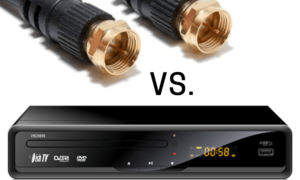When it comes to portable monitors, connectivity is a key factor in determining usability and efficiency. Dell, a well-known brand in the computing industry, offers a range of portable monitors that promise convenience and performance. One of the most common questions among consumers is whether the original USB-C specification is sufficient for powering and operating these monitors.
Understanding USB-C and Its Capabilities
USB-C, originally introduced in 2014, brought a significant change in connectivity with its reversible design and multi-functional capabilities. The original USB-C standard allows for:
- Power delivery up to 15W (or higher, depending on the supported profile).
- Data transfer speeds of up to 5Gbps (for USB 3.1 Gen 1).
- Support for video transmission through DisplayPort Alt Mode.
While these capabilities were impressive at the time of introduction, technological advancements and higher demands from modern devices have pushed the limits of the initial USB-C specifications.
Power and Data Transfer Requirements for Portable Dell Monitors
Many of Dell’s portable monitors rely solely on a USB-C connection for both power and data transmission. This creates a dependency on the capabilities of the USB-C port being used.
Key requirements for most Dell portable monitors include:
- Minimum 7.5W to 15W power supply for basic operation.
- DisplayPort Alt Mode support to ensure compatibility with a single-cable connection.
- Data bandwidth that allows for smooth video transmission without lag or interruptions.

The original USB-C standard, while capable of delivering a certain level of power and data transmission, may not always be sufficient for full functionality. Some portable Dell monitors require a USB-C connection with USB Power Delivery (USB-PD) and higher versions of DisplayPort Alt Mode to provide a seamless experience.
Challenges of Using the Original USB-C
Although USB-C is designed to support multiple functions, the original version may come with certain limitations when used with a portable Dell monitor. These include:
- Power Delivery Constraints: If the device provides less than the required power, the monitor may function at reduced brightness or might not turn on at all.
- Video Bandwidth Limitations: The first generation of USB-C supported only DisplayPort 1.2, which may result in lower refresh rates or restricted resolutions.
- Device Compatibility Issues: Not all USB-C ports, especially those that follow the earliest versions of the standard, support video output.
These challenges mean that, while some portable Dell monitors may operate with the original USB-C standard, they might not perform optimally depending on the laptop or device being used.
USB-C Enhancements in Newer Standards

To overcome the limitations of the original USB-C standard, newer versions have introduced improvements, including:
- USB-C with Power Delivery (USB-PD): Allows power transfer of up to 100W, ensuring monitors receive sufficient power.
- USB 3.2 and USB4: Offer higher data transfer speeds and improved DisplayPort support for seamless video output.
- Thunderbolt 3 and 4: These provide greater bandwidth, ensuring full-resolution display and stable connectivity.
Newer USB-C implementations ensure that portable Dell monitors function optimally with a single connection, reducing the need for additional power adapters or secondary cables.
Conclusion: Is the Original USB-C Enough?
While the original USB-C specification is capable of running certain models of Dell portable monitors, it is not always enough to guarantee full functionality, stable performance, or higher resolutions. The specific needs of the monitor, including power requirements and display output capabilities, must align with the capabilities of the USB-C port on the connected device.
For those looking to use a Dell portable monitor efficiently, it is recommended to ensure:
- Your USB-C port supports Power Delivery (USB-PD) for adequate power supply.
- The port offers DisplayPort Alt Mode with at least DisplayPort 1.4 support.
- A compatible USB-C to USB-C cable is used to maximize connectivity and performance.

Ultimately, while the original USB-C might work for some configurations, the best experience will come with newer USB-C standards that provide higher power outputs and faster data transfer speeds.














